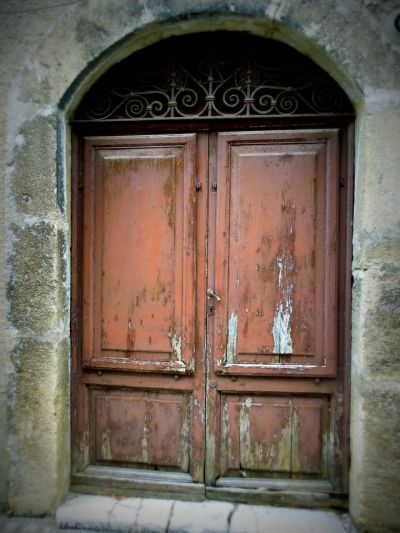I have always enjoyed looking at doors, particularly when visiting an ancient Italian village where you will likely find some rather unusual porte. Nothing was standardized centuries ago and, indeed, a door could tell very much about the family living in a house. Door sizes and materials were rather variable and their construction methods were also very much dependent on the location of the town and the relative need for protection and safety, a major issue then as it is today. The quality of the woods used varied as well, depending on the status and the business activities of the family.
I have often marveled at some of these centuries-old doors, still well-functioning although often showing clear signs of water and ice exposure (fig. 1). As most entrances seem to differ in width and height, so do the doors (figs. 2,3). Often you will find small windows at the side of the entrance (figs. 4,5), probably to allow the owners to recognize knocking visitors. Entrances to simpler homes or to stables were built utilizing inexpensive yet very sturdy woods (figs. 6,7) and some remain in use even though the building might have now become a local ostaria (fig. 8)! What might have been, at one time, a street level storage room is today often transformed into an artisan shop or a restaurant (figs. 9,10) at times requiring a more modern door. Many old buildings, now restored, will often preserve the original door (fig. 11) after the necessary updates, thus maintaining their unmatched style and beauty. Some of the more prominent buildings have become the town's City Hall (fig. 12) or some other government office, thus providing a second chance to buildings too big and expensive for private owners to maintain.
If you have visited Italy, you know that one of the best pleasures of life, particularly if spent somewhere in a quiet paese, is the evening passeggiata in the company of friends or relatives, often ending at the local bar for an aperitif or a gelato. But, it might also be just as enjoyable to sit by your own doorway, catch a little breeze and watch people passing by (fig. 13).
https://www.lagazzettaitaliana.com/photo-exhibit/8951-vecchie-porte-old-doors#sigProIddbd2df4c38




